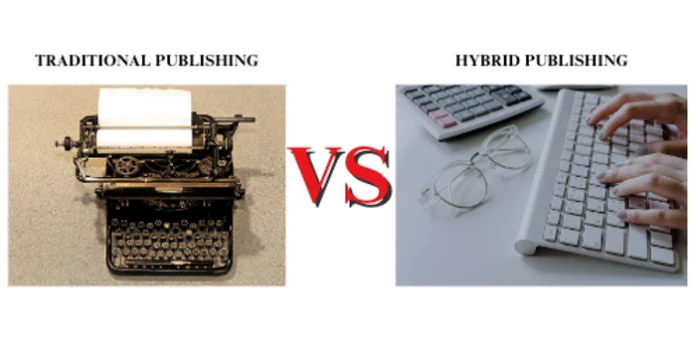The publishing industry is evolving rapidly, offering authors more pathways than ever to see their work in print. Among these options, the rise of hybrid publishers has created a middle ground between the conventional world of traditional publishing and the freedom of self-publishing. But what exactly sets hybrid publishers apart from their traditional counterparts? Let’s explore the key differences, helping you determine the best route for your book’s journey.
What is a Hybrid Publisher?
A hybrid publisher combines aspects of traditional publishing and self-publishing. Unlike traditional publishers, hybrid publishers require authors to share the financial investment in the publishing process. However, they also offer professional services like editing, design, marketing, and distribution—elements often missing in self-publishing.
In essence, a hybrid publisher partners with the author, ensuring the book meets high-quality standards while granting the author greater control over the creative and business aspects.
What is a Traditional Publisher?
Traditional publishers follow a more conventional route, taking full control of the publishing process. When an author submits a manuscript, the publisher decides whether to invest in the project. If accepted, the publisher handles all production costs, editing, design, marketing, and distribution.
Authors typically receive an advance against future royalties but relinquish most of the creative and decision-making power. The publisher owns the rights to the book and dictates its marketing strategy.
Key Differences Between Hybrid and Traditional Publishing
1. Financial Model
- Hybrid Publisher: Authors contribute financially, sharing the risks and rewards.
- Traditional Publisher: The publisher covers all costs, offering authors an advance but retaining a larger share of the profits.
2. Creative Control
- Hybrid Publisher: Authors maintain more creative freedom, from the cover design to marketing decisions.
- Traditional Publisher: Most creative decisions rest with the publisher, often leaving authors with limited input.
3. Royalties and Earnings
- Hybrid Publisher: Authors typically earn a higher percentage of royalties since they share the investment.
- Traditional Publisher: Authors earn smaller royalties, as the publisher takes a significant share to recoup their investment.
4. Speed to Market
- Hybrid Publisher: Offers a faster publishing timeline, as authors aren’t constrained by the lengthy traditional submission and approval processes.
- Traditional Publisher: The process can take years, from manuscript acceptance to publication.
5. Accessibility
- Hybrid Publisher: Easier to approach; most hybrid publishers accept submissions directly from authors.
- Traditional Publisher: Often requires an agent or established credentials, making it harder for new authors to break in.
Benefits of Choosing a Hybrid Publisher
- Control: Retain decision-making power over your book’s direction.
- Quality Services: Access professional editing, design, and marketing support.
- Higher Royalties: Enjoy a larger share of the profits.
- Partnership Model: Work collaboratively with experts while sharing financial risks.
Advantages of Traditional Publishing
- Prestige: Being published by a traditional house often carries greater recognition and credibility.
- No Upfront Costs: Authors don’t have to invest their own money.
- Broad Distribution: Access to established networks for marketing and distribution.
Which Path is Right for You?
Choosing between a hybrid publisher and a traditional publisher depends on your goals, resources, and priorities. If creative control and higher royalties are your priorities, a hybrid publisher may be the perfect fit. On the other hand, if prestige and financial support appeal to you, traditional publishing might be the way to go.
Ultimately, understanding the distinctions empowers you to make an informed decision, setting your book up for success in a rapidly evolving industry.


















